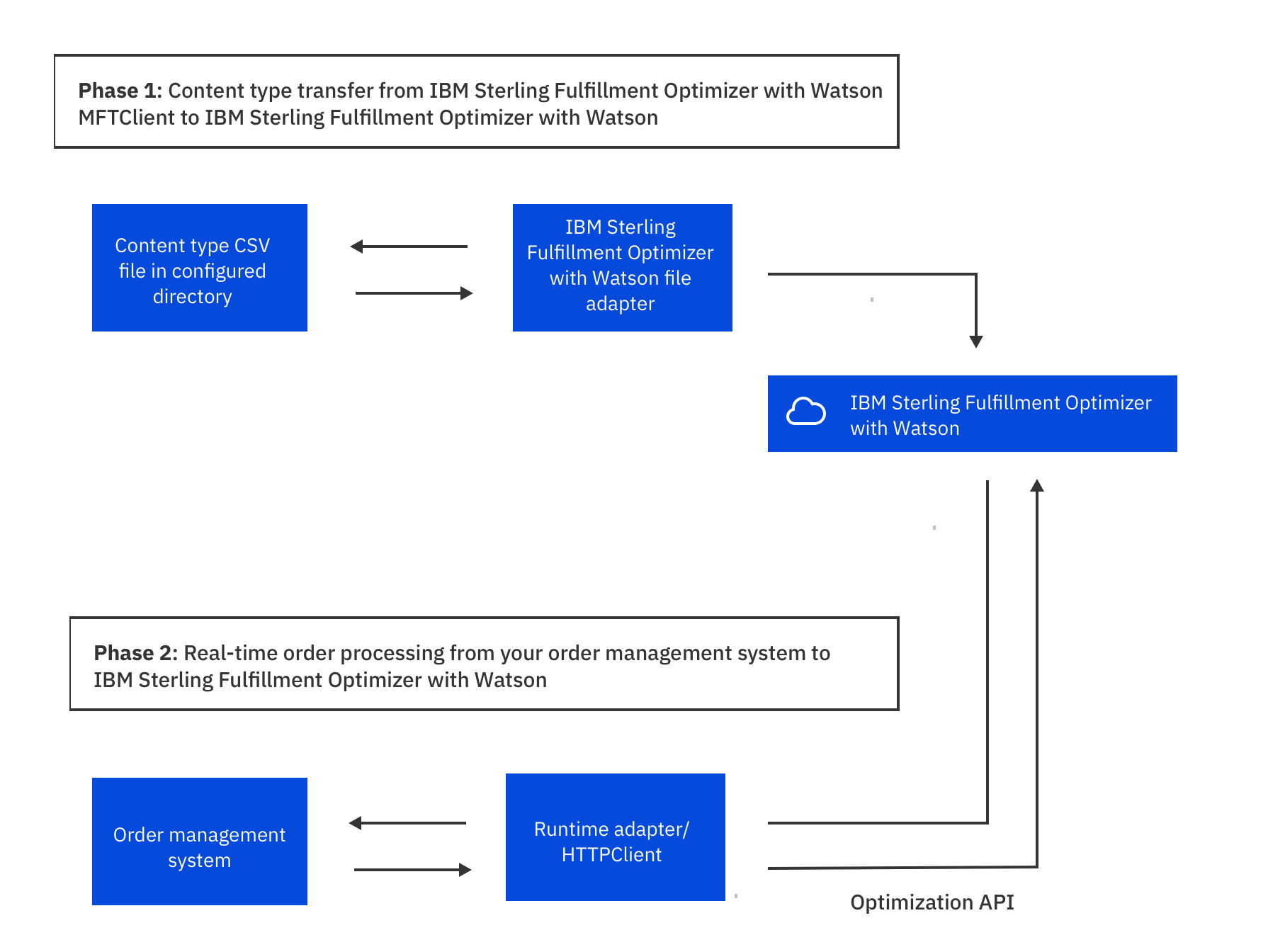Technical overview
The IBM Sterling Fulfillment Optimizer with Watson combined optimization model helps you improve efficiency and balance inventory levels to avoid stockouts and costly markdowns, reducing the total cost to serve and increasing profit margins. Fulfillment Optimizer uses a two-phase optimization model with two components – predictive cost estimation and order cost optimization.
Fulfillment Optimizer uses data from multiple sources to give you an accurate cost picture. It calculates real costs, such as shipping and processing, along with predictive costs, such as potential markdowns and in-store stockouts. The data sources, which include order management systems and content types, analyze orders that are made by customers against shipping metrics, processing plans, network constraints, and SLAs. Fulfillment Optimizer then provides cost estimations based on each factor.
The first phase is the Fulfillment Optimizer data integration phase. Phase 2 is the API integration phase, where order information is transferred from IBM® Sterling Order Management System to Fulfillment Optimizer. Both phases of information transfer must occur simultaneously.

Phase 1 - Data integration
In Phase 1, content must be transferred from source systems to configured directories within Fulfillment Optimizer by using the file adapter on a configured schedule. Different content types can be transferred on different schedules. Fulfillment Optimizer ingests the content and builds a model to make optimization decisions for orders that need to be fulfilled.
Data from IBM Sterling Order Management System is available as events Fulfillment Optimizer subscribes to these events and ingests the content.
For more information, see Managing data.
Phase 2 - Transfer of data for a scheduled order from an order management system to Fulfillment Optimizer
In Phase 2, order information must be transferred from an order management system by using the Optimizer APIs. The Optimizer APIs make optimized sourcing decisions for orders and reduce the total cost to serve in real time.